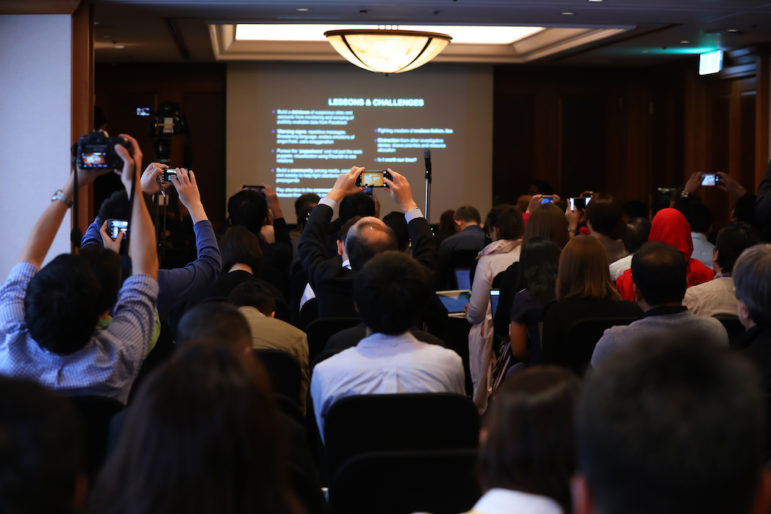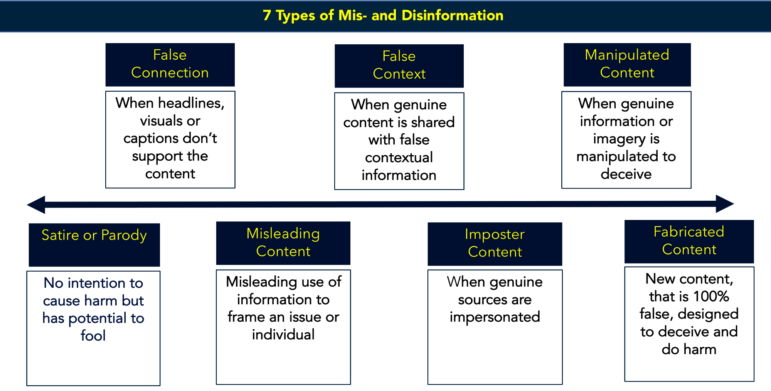
Taking Note: Chay Hofileña, the investigative editor from Rappler, presented lessons and challenges on fighting disinformation in the Philippines. Photo: Taekyong Chung
From Russian trolls to teenage boys in Macedonia, Craig Silverman has exposed a wide gamut of disinformation operations around the world.
During the Uncovering Asia conference in Seoul, the Toronto-based media editor of BuzzFeed News joined a panel of journalists who tackled the topic of fake news and propaganda, discussing the different — and similar — ways fake news and disinformation spreads around the world. The panel, which was moderated by Columbia Journalism School dean Sheila Coronel, also included Chay Hofileña, the investigative editor from Philippines’ Rappler and Aniruddha Bahal, the editor of Cobrapost.com.
Silverman spoke about trends he’s noticed over the last few years, boiling them down to four key findings, which Hofileña and Bahal also have found in their own newsrooms.
1. There are different kinds of disinformation and different motivations.

First Draft
Manipulating Content: Seven types of mis- and disinformation, according to First Draft, a project out of Harvard’s school of government. Screenshot
Silverman emphasized the nuance in fake news. It might seem like the same content, he said, but it’s important to investigate motivations. Sometimes it’s motivated by money, other times it’s political manipulation.
2. It’s a global problem.
In the Philippines, the dissemination of fake news occurs mainly on social media platforms, such as Facebook. So much of the country’s population is on the site, Hofileña said: “Facebook is basically the Internet.”
In 2016, Hofileña saw a rise in fake accounts posting misleading content. A few influencers have the ability to reach millions of people with a single message, which are usually political in nature. These messages are then often amplified by the Duterte administration.
“We’re up against creators of fiction,” Hofileña said. “They will not stop, but we have to keep trying to clean it up otherwise they will get the impression they’ve conquered a platform. There has to be a level of resistance.”
Meanwhile, Bahal said that the media in India is actually the problem. Cobrapost.com recently broke a story that exposed 45 Indian media platforms for hosting paid news. These publishers were found to be taking money in exchange for polarizing coverage, political manipulation and insidious campaigns.
“The mainstream media has big megaphones and big social media traction,” Bahal said. “You don’t need trolls. I would say the enemy is within.”
3. The spread of fake news feeds off of polarization and human bias.
The spread of fake news is exacerbated by people’s tendency towards community and belonging, sometimes even at the expense of facts, Silverman said.
“The more extreme a position, the more of an audience it gets,” Bahal said when discussing the popularity of fake news. “People read towards their bias or hate. I think (this phenomenon) reflects the society that we live in and (the content creators) are just cashing in on it.”
4. Fake news exploits networks and algorithmic programming.
Silverman spoke about the creation of trolling operations that are planned in private messaging apps and then executed on public platforms. It’s a global operation, he said. There are companies selling fake accounts and content that is used to overwhelm the public, create white noise and act as a distraction.
To equip journalists with tools to combat all kinds of disinformation, Silverman created a tip sheet that he regularly updates.
“These tools aren’t overly complicated,” Silverman said. “You don’t need to be super technical and a lot of them are free.”
The session ended with a quick note about safety and mental health.
When stories are published at Rappler, the editors and reporters are considerate of the social media teams because they’re on the front lines, Hofileña said. They are the ones who deal with the heaviest onslaught of online hate and harassment. Therapy is also offered.
“We’ve had enough targeted harassment of our people at BuzzFeed that we now have a security team and preventative measures in place,” Silverman said. “There’s nothing good that comes from pretending you can handle (the online harassment). It’s not about being strong, it’s about being human.”
 Mariel Padilla is a data and investigative fellow at Columbia University’s Graduate School of Journalism. Her work has been published in USA Today, Patch.com, FilAm Magazine, The Philippine Daily Inquirer and The Cincinnati Enquirer, where she contributed to the Pulitzer-prize winning project: “Seven Days of Heroin.”
Mariel Padilla is a data and investigative fellow at Columbia University’s Graduate School of Journalism. Her work has been published in USA Today, Patch.com, FilAm Magazine, The Philippine Daily Inquirer and The Cincinnati Enquirer, where she contributed to the Pulitzer-prize winning project: “Seven Days of Heroin.”
